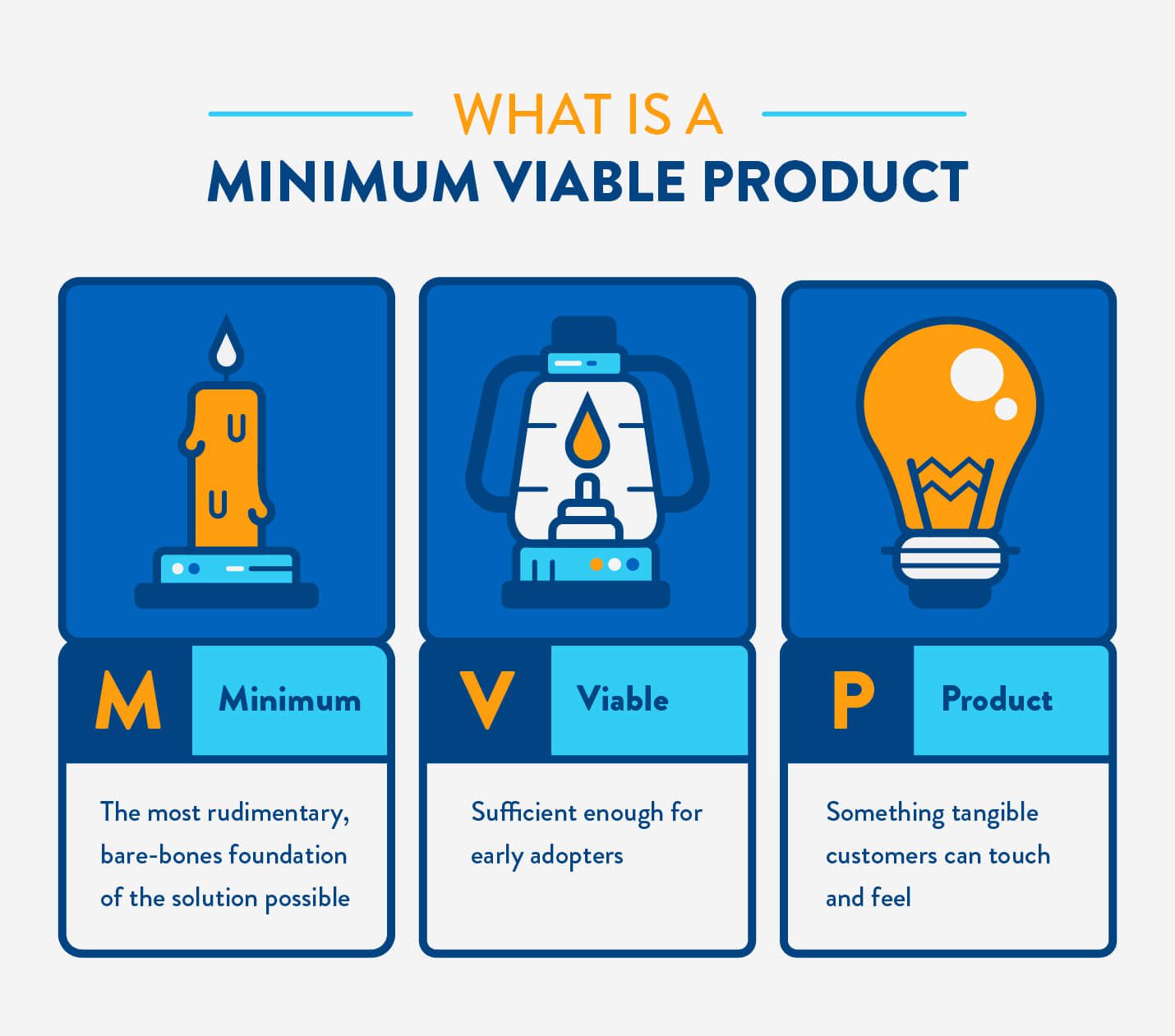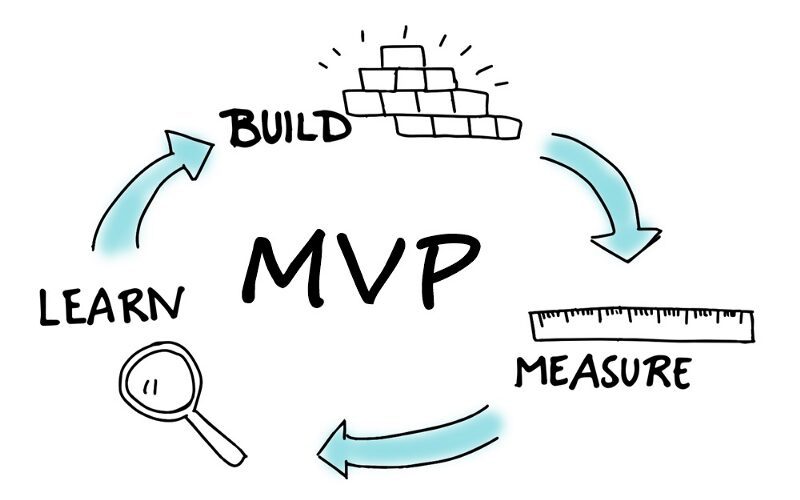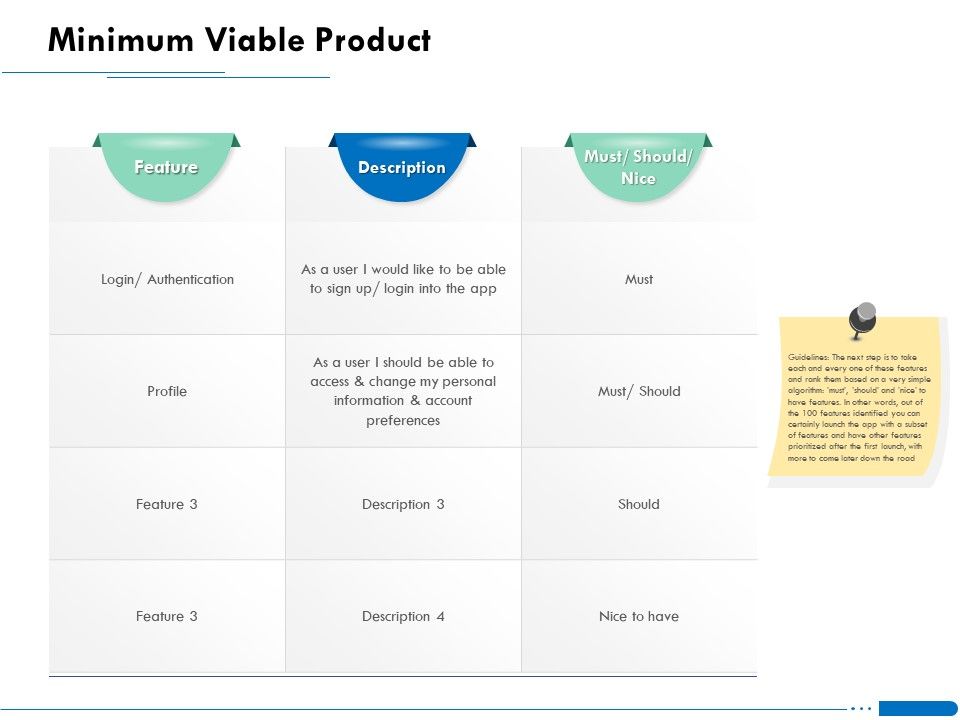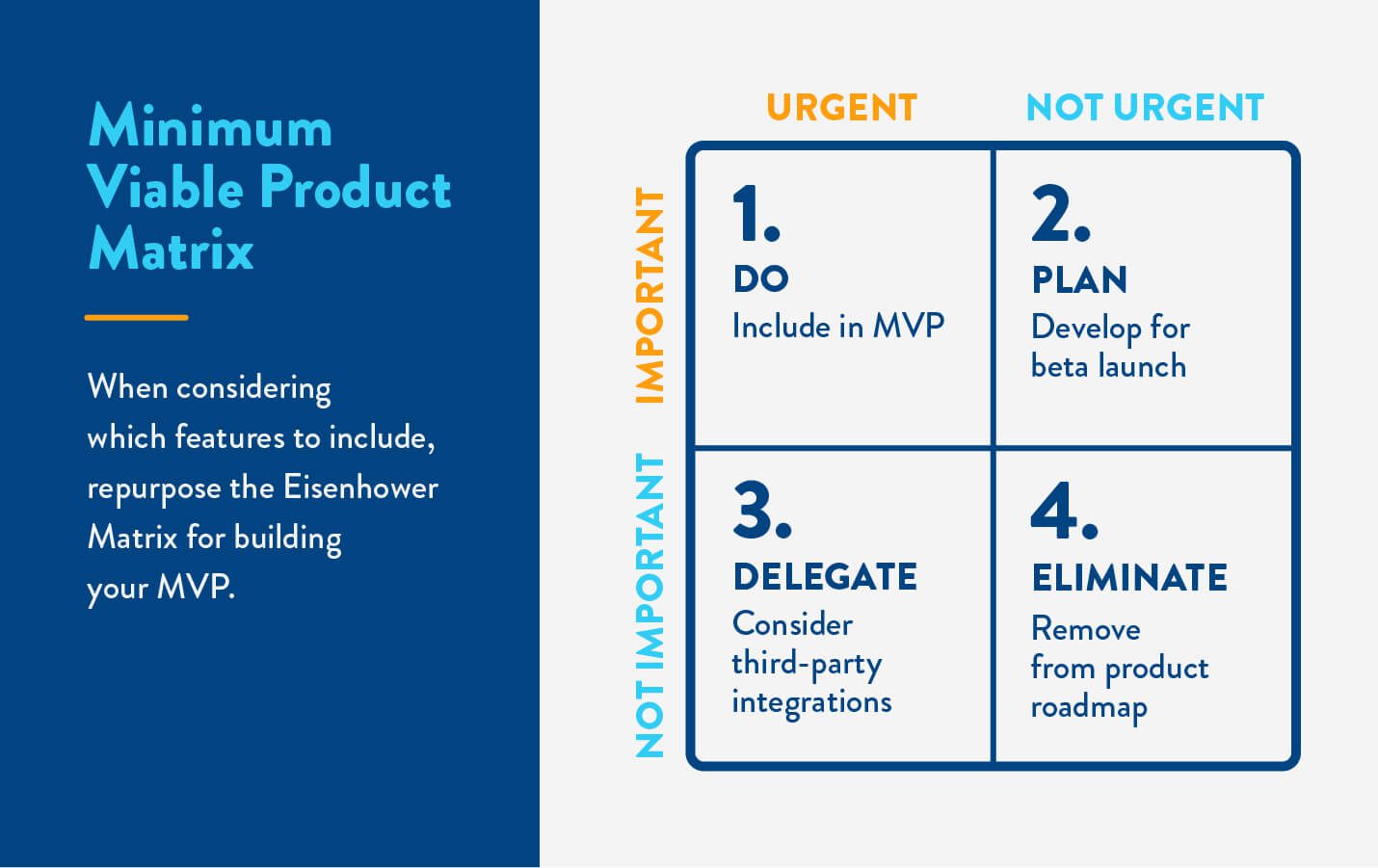A Minimum viable product (MVP) is the most basic version of your product that you can create. The goal of an MVP is to quickly test your idea with potential customers and gather feedback without spending too much time or money on developing the product.
It is a product with just enough features to satisfy early adopters.
These products are usually used for testing the market.
minimum viable product
What Is A Minimum Viable Product?
Minimum Viable Product is a term that comes from the startup world and it refers to a product with the most basic set of features.
The goal of this type of product is not to be perfect, but instead to test out whether or not there are customers interested in your idea.
This can help you avoid spending time and money on creating an entire product just for it to fail when people don’t want it.
In the fast-paced world of video production, a Minimum Viable Product (MVP) isn’t just a buzzword – it’s your secret weapon.
We’ll jump into why streamlining your focus to an MVP can catapult your company to the forefront of the industry.
An MVP approach allows us to test our creative concepts quickly and efficiently, ensuring we’re always one step ahead.
Stay tuned as we explore how embracing an MVP can lead to game-changing innovation and success in your video production endeavors.
What Is A Minimum Viable Product (mvp)?
In the world of video production, an MVP is not just a star athlete—it’s a strategy that allows us to test, learn, and succeed quickly.
At its core, the Minimum Viable Product is the most basic version of a video that still provides value to the viewer and feedback to the producer.
Launching an MVP means we prioritize core features.
These are the must-haves that will address the key needs of our target audience without the bells and whistles.
This concept stems from the lean startup methodology and is all about efficiency and learning with the least amount of effort.
The MVP approach is nothing new – it has propelled significant players across industries to stardom.
Think of Facebook starting off as a simple social network for college students or Airbnb beginning as a basic website offering an air mattress for rent during a design conference.
Each of these world-changing companies started with a simple idea that grew into something monumental.
We stick to the idea that an MVP allows us to verify our concepts with our audience.
This helps us adjust, evolve, or even pivot our strategy based on real-world feedback.
We’re not making assumptions; we’re gathering concrete evidence about what works and what doesn’t.
Our video MVPs support this philosophy – – Test the water with minimal risk – Gain valuable insights – Iterate and improve quickly
Once we set our MVP in motion, we constantly gather data from our viewers.
We monitor metrics such as view count, engagement, and audience feedback.
These indicators help us determine our video’s impact and direct our next steps in production.
Through an MVP, we embrace a cycle of continuous improvement.
Rather than waiting for a perfect product, we launch early iterations, learn from them, and iterate.
It’s how we stay ahead in a competitive landscape where agility is key.
The Benefits Of An Mvp Approach In Video Production
Adopting a Minimum Viable Product strategy for video production offers numerous advantages.
First and foremost, cost savings are substantial.
By focusing on essential features, we minimize expenses while still delivering value to our audience.
Rapid feedback is another critical benefit.
An MVP allows us to release our content quickly and start the conversation with our viewers early on.
This immediate engagement is invaluable for gauging reactions and determining the future direction of our projects.
Collaboration between departments becomes more efficient through the MVP process.
With everyone aligned on the core objectives, our teams can work seamlessly together, ensuring a cohesive final product that resonates with our target demographic.
Implementing an MVP approach also accelerates the learning curve –
- We identify and solve problems faster,
- Iterations occur with more agility,
- Creativity flourishes within defined constraints.
Our audience’s needs and preferences are constantly evolving.
An MVP makes it easier to adapt to these changes, providing a more flexible framework for innovation and tailoring content to viewer demand.
Besides, the MVP strategy helps in building a stronger brand connection.
When we involve our audience early on, we’re not just making videos – we’re creating a community.
This dynamic creates a passionate user base that’s eager to see what we develop next.
finally, the data-driven nature of an MVP equips us with powerful insights.
By analyzing viewer behavior with each iteration, we’re able to make informed decisions that enhance both the viewer experience and our bottom line.
Streamlining Your Focus For Maximum Efficiency
In today’s competitive market, it’s critical to maximize our resources and focus on what truly matters.
Our MVP strategy centers on stripping back the excess and investing in core elements that speak volumes to our audience.
We understand that efficiency is
By honing in on the essentials, we’re able to allocate our time and budget more effectively.
This meticulous focus channels our creative efforts to produce impactful content that resonates with viewers.
Creating a list of non-negotiables for each project guides us in maintaining our focus:
- Outline key messages that must be conveyed,
- Identify the core audience and their interests,
- Determine the most effective format and platform for delivery.
Yet, it’s crucial to remain flexible within these parameters.
This adaptability allows us to pivot when audience feedback suggests a different approach and ensures we’re not wasting resources on elements that don’t add value.
Focusing on a targeted set of features doesn’t mean compromising on quality.
But, it means every aspect of the video we create is polished to perfection.
It allows for a deeper connection with the material and a more authentic storytelling experience.
Implementing the MVP model in our video production has taught us the art of resourcefulness.
We’ve learned to maximize the tools at our disposal and make every decision count toward the final product.
Our projects, like The Minimalist Filmmaker, have shown that with fewer distractions, our content stands out more.
It’s in this simplicity that our videos find their strength and our brand its voice.
By streamlining our focus, we’re able to deliver videos that don’t just meet expectations but exceed them.
And with each project, we’re constantly refining our approach to efficiency, which in turn fuels our growth and success in this dynamic industry.
Testing Creative Concepts With An Mvp
In the world of video production, an MVP approach isn’t just about saving on costs; it’s about validating our creative decisions early on.
We’re able to test different narrative structures, visual styles, or pacing variations before we’re too far down the production pipeline.
Real-time feedback from our target audience gives us the insight we need to pivot or persevere with confidence.
This means we can avoid the costly mistake of full production on concepts that don’t resonate with viewers.
With MVP, we quickly learn what our audience wants and needs from our content.
This allows us to allocate our resources to the areas that have the biggest impact.
By introducing MVPs in our workflow, we gain valuable benefits:
- We reduce the risk associated with new, untested ideas.
- We gather actionable feedback that can dramatically improve the final product.
- We foster a culture of continuous improvement and agile development.
Implementing the MVP model has shown us that less can indeed be more.
We have the chance to rigorously test our most innovative concepts without significant resource expenditure.
Overall, deploying MVPs in our creative process has made us more dynamic and responsive filmmakers.
We’re not just creating content; we’re cultivating an engaged and satisfied audience by delivering exactly what they’re looking for—and what they didn’t know they needed.
Innovating And Succeeding With An Mvp
In the fast-paced world of video production, adopting a Minimum Viable Product mindset is crucial for staying ahead.
It enables us to innovate efficiently and succeed by validating ideas quickly and with minimal resources.
This approach encourages a creative breeding ground for fresh concepts that can be executed rapidly.
By focusing on core functionalities, an MVP ensures that we invest in the right areas that add value to the final product.
The benefits are numerous and diverse, playing a pivotal role in the overall growth and adaptability of a production company.
The key advantages include:
- Streamlined Workflow – Concentrating on essential features simplifies the production process.
- Cost-Effective Solutions – Reducing unnecessary elements lowers the budget without sacrificing quality.
- Faster Time to Market – Swift development means we can publish content and reach audiences more quickly.
- Enhanced Flexibility – The ability to iterate based on feedback keeps us agile and responsive to change.
In the world of video production, bouncing back from setbacks is imperative.
The MVP philosophy offers a safety net that protects against major failures.
By releasing content in phases, we can course-correct with minimal fallout and ensure that each step we take is calculated and strategic.
Embracing an MVP approach is not just about cutting corners; it’s about smart management of resources.
It allows us to allocate the right amount of time, money, and effort where it’s most impactful.
For visionary projects like Inception or The Matrix, the ability to pivot and adapt during production likely contributed to their groundbreaking success.
Our audiences crave novelty and relevance in the videos they consume.
Through MVP, we can deliver both with precision, offering a slate of content that’s both fresh and finely tuned to their evolving tastes.
By marrying innovation with strategy, we set the stage for enduring triumph in the competitive realm of film and video.
Minimum Viable Product Why Your Video Production Company Should Be Your Mvp – Wrap Up
Adopting the MVP approach in our video production processes has proven to be a game-changer.
We’ve seen firsthand how it saves costs and accelerates learning, enabling us to deliver content that truly resonates with our audience.
It’s about being resourceful and adaptable, ensuring every project we undertake is aligned with viewer preferences and industry trends.
By embracing this strategy, we’re not just making videos—we’re crafting experiences that connect and stay with our viewers.
Let’s continue to innovate and lead in our field by keeping MVP at the core of our video production philosophy.
Frequently Asked Questions
What Is The Mvp Approach In Video Production?
The MVP (Minimum Viable Product) approach in video production focuses on creating content with just the essential features that still provide value to the audience, allowing for cost efficiency, rapid feedback, and the agility to adapt to viewers’ preferences.
How Does An Mvp Approach Save Costs In Video Production?
By concentrating on necessary features, the MVP approach reduces unnecessary expenses in video production, thereby streamlining the budget on high-impact areas that resonate with the audience.
Why Is Rapid Feedback Important In Video Production?
Rapid feedback gathered through an MVP can help gauge initial audience reactions, facilitating early engagement and providing valuable insights that guide the future direction of video projects.
How Does An Mvp Strategy Benefit Collaboration Between Departments?
The MVP model promotes efficiency and streamlines communication among departments, as it focuses on delivering a product with basic, yet essential features, requiring teams to prioritize and collaborate effectively.
What Kind Of Insights Can An Mvp Approach In Video Production Provide For Decision-making?
An MVP approach delivers data-driven insights from early audience engagement, which can inform decisions on content adjustments, future projects, and strategies for audience growth.
How Can Implementing An Mvp Model Contribute To A Brand’s Connection With Its Audience?
By addressing the core needs and preferences of the audience with an MVP model, brands can build stronger, more authentic connections with their viewers, as the content is tailored and refined based on real feedback.
In What Ways Does The Mvp Approach Enhance Creativity And Risk Management In Video Production?
The MVP philosophy allows creators to test new ideas with minimal risk by seeking early feedback on simplified versions of content, encouraging innovation while efficiently managing resources and lowering risk.







